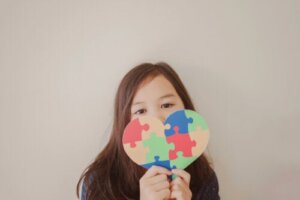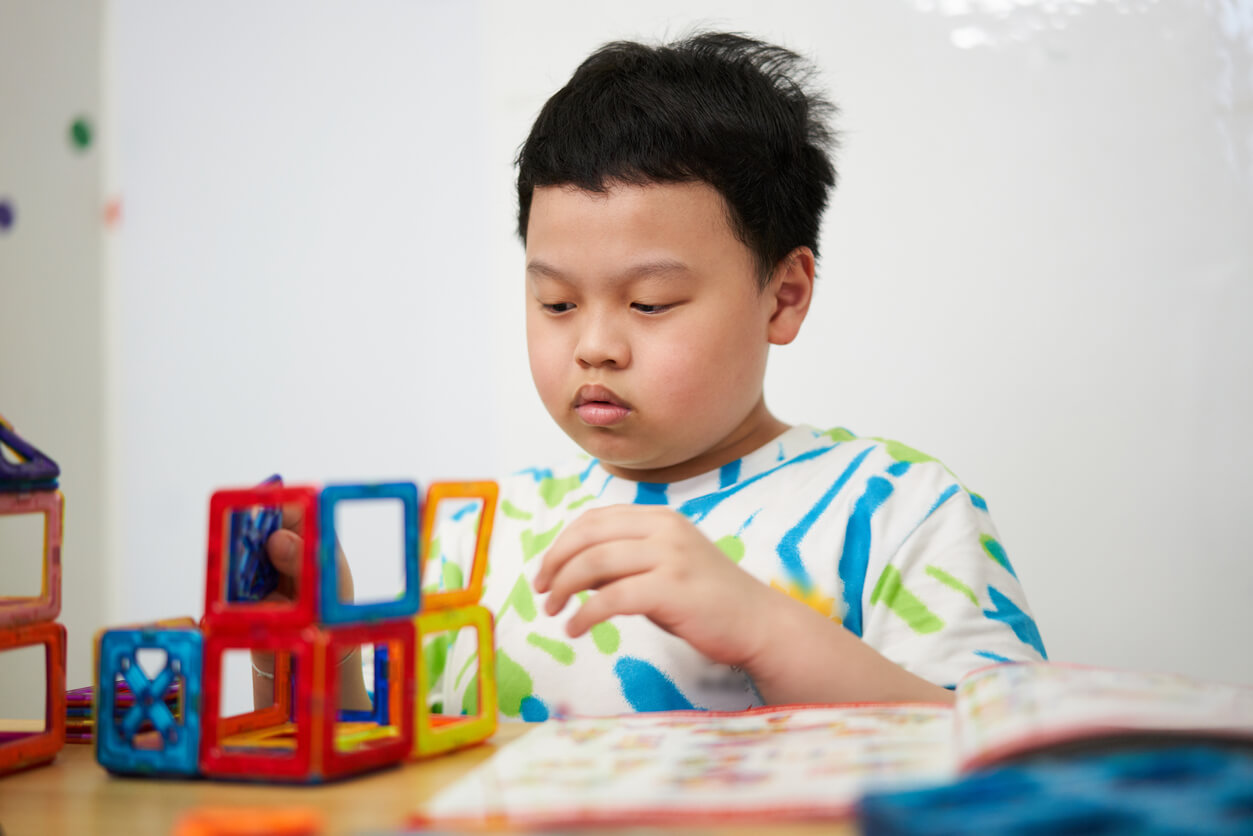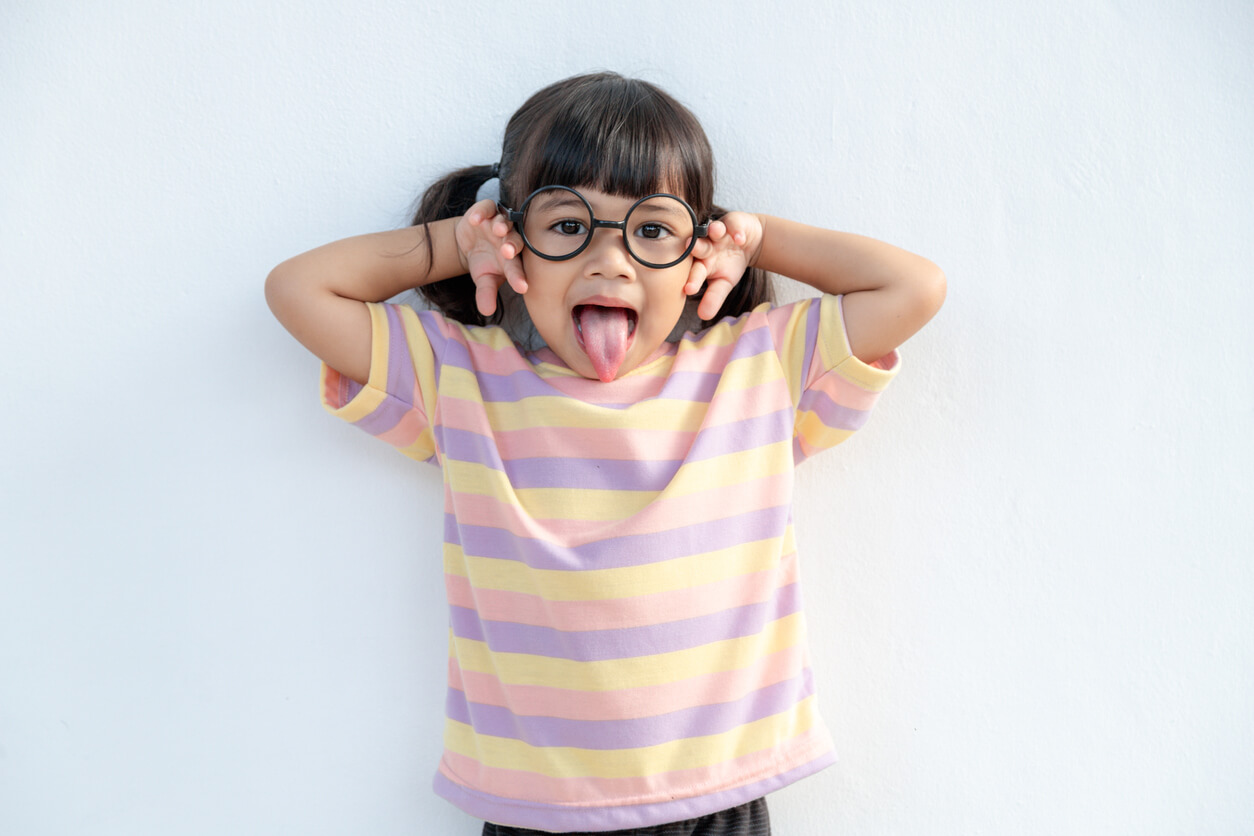Autistic Masking: What Does It Consist Of?


Written and verified by the psychologist Maria Fátima Seppi Vinuales
There’s still little acceptance of diversity in the world, and certain mandates related to beauty and health prevail. Therefore, many people are forced to use strategies as a defense mechanism to disguise certain aspects and “look more like others”. In people with ASD (autism spectrum disorder), autistic masking can be a form of survival, although not without consequences on their health and well-being. Let’s learn a little more about this issue.
About Autism Spectrum Disorders (ASD)
It’s worth remembering that the term ASD is used to encompass a number of neurological disorders under a general label. They have some characteristics in common, but also differ from each other. Those that are shared refer to difficulties in interaction and communication and the presence of restricted interests and repetitive behaviors. Depending on the type of disorder in question, other differential characteristics may appear.
There’s also talk of high and low-functioning autism, that the difficulties specific to the case interfere to a greater or lesser degree. It should be noted that autistic masking occurs more frequently in the first case.
- High functioning: The child usually has fewer difficulties when it comes to social behavior.
- Low functioning: The child may not be able to understand certain social signals or facial gestures.
What is autistic masking?

Bodies, emotions, lifestyle, and interests. In almost all the different spheres of life, society has established certain standards of what’s considered “normal” or “desirable”. However, not everyone has the same starting point or the same possibilities. Therefore, being able to adapt becomes a requirement and a challenge.
For people with Autism Spectrum Disorder (ASD), autistic masking involves disguising or hiding certain aspects of oneself in order to please, to go unnoticed, or not to draw attention to oneself. This is how they rehearse certain behaviors, for example, trying to maintain eye contact in conversations with other people, controlling the impact of certain stimuli, or suppressing the urge to stim.
At the same time, autistic masking also tends to be more frequent in females than in males. Females may find it easier to simulate “neurotypical” behavior. For example, restricted interests focus on aspects or topics that are socially acceptable, such as makeup or concern for aesthetics.
Health consequences of autistic masking
But at what cost? Just as there are people who undergo strict diets to have a hegemonic body and suffer as a result, the same happens with people with autism. In this regard, some of the consequences of autistic masking are the following:
- Symptoms of anxiety and depression
- The feeling of not fitting in and living a double life
- Discomfort in unfamiliar environments
- Search for approval
- Insecurity and dissatisfaction with themselves
- A tendency to have lower self-esteem
- Continuous tension in order to maintain a certain behavior
- Changes in mood and behavior: Irritability, frustration, and aggressiveness
- Physical and bodily aches and pains, such as headaches or stomachaches
- Loss of interest in attending places they used to be interested in or enjoy
Finally, it’s worth remembering that the practice of autism masking impacts early diagnosis. Although ASD is often diagnosed in childhood, masking may imply a delay. Undoubtedly, this impacts timely intervention and the quality of life of individuals.
You may be interested in: Behaviors that May Be Signs of Autism

Recommendations regarding autistic masking
Some of the recommendations to keep in mind for people with autism are the following:
- Show acceptance and highlight their achievements. Some actions seem simple to our eyes. However, for a person with an autism spectrum disorder, it may take a lot of time and effort to accomplish them. It’s important that, without being condescending, we value their dedication and effort.
- Transmit positive messages about diversity. Teach them to show themselves as they are, without pretending to be an exact copy of others.
- Help them think about where they feel they’re strongest. For example, by sharing our own experiences, we can show them that we all have strengths and weaknesses and that there’s nothing wrong with that. Within the autism spectrum, there are those who need different kinds of support.
- Make diversity visible. For example, through films, famous people with autism, or books on the subject.
You may be interested in: 7 Keys to Make a Child with Autism Happy
What if you were the one who had to pretend?
The world needs more empathy and respect. Let’s stop for a moment and give it a try: Let’s try wearing a smaller shoe size or stepping into a pair of stilettos. Then, let’s take a few steps forward. How do we feel? A little uncomfortable, isn’t it?
This is the permanent feeling of “not fitting in despite trying” that people with autism experience. Instead of being able to enjoy and be fully present in a given situation, their whole being is engaged in camouflaging themselves. If we find 5 steps in inappropriate footwear uncomfortable, then let’s imagine what it’s like to wear a disguise permanently.
Let’s make room for acceptance and compassion. The world can be a friendlier place for all.
There’s still little acceptance of diversity in the world, and certain mandates related to beauty and health prevail. Therefore, many people are forced to use strategies as a defense mechanism to disguise certain aspects and “look more like others”. In people with ASD (autism spectrum disorder), autistic masking can be a form of survival, although not without consequences on their health and well-being. Let’s learn a little more about this issue.
About Autism Spectrum Disorders (ASD)
It’s worth remembering that the term ASD is used to encompass a number of neurological disorders under a general label. They have some characteristics in common, but also differ from each other. Those that are shared refer to difficulties in interaction and communication and the presence of restricted interests and repetitive behaviors. Depending on the type of disorder in question, other differential characteristics may appear.
There’s also talk of high and low-functioning autism, that the difficulties specific to the case interfere to a greater or lesser degree. It should be noted that autistic masking occurs more frequently in the first case.
- High functioning: The child usually has fewer difficulties when it comes to social behavior.
- Low functioning: The child may not be able to understand certain social signals or facial gestures.
What is autistic masking?

Bodies, emotions, lifestyle, and interests. In almost all the different spheres of life, society has established certain standards of what’s considered “normal” or “desirable”. However, not everyone has the same starting point or the same possibilities. Therefore, being able to adapt becomes a requirement and a challenge.
For people with Autism Spectrum Disorder (ASD), autistic masking involves disguising or hiding certain aspects of oneself in order to please, to go unnoticed, or not to draw attention to oneself. This is how they rehearse certain behaviors, for example, trying to maintain eye contact in conversations with other people, controlling the impact of certain stimuli, or suppressing the urge to stim.
At the same time, autistic masking also tends to be more frequent in females than in males. Females may find it easier to simulate “neurotypical” behavior. For example, restricted interests focus on aspects or topics that are socially acceptable, such as makeup or concern for aesthetics.
Health consequences of autistic masking
But at what cost? Just as there are people who undergo strict diets to have a hegemonic body and suffer as a result, the same happens with people with autism. In this regard, some of the consequences of autistic masking are the following:
- Symptoms of anxiety and depression
- The feeling of not fitting in and living a double life
- Discomfort in unfamiliar environments
- Search for approval
- Insecurity and dissatisfaction with themselves
- A tendency to have lower self-esteem
- Continuous tension in order to maintain a certain behavior
- Changes in mood and behavior: Irritability, frustration, and aggressiveness
- Physical and bodily aches and pains, such as headaches or stomachaches
- Loss of interest in attending places they used to be interested in or enjoy
Finally, it’s worth remembering that the practice of autism masking impacts early diagnosis. Although ASD is often diagnosed in childhood, masking may imply a delay. Undoubtedly, this impacts timely intervention and the quality of life of individuals.
You may be interested in: Behaviors that May Be Signs of Autism

Recommendations regarding autistic masking
Some of the recommendations to keep in mind for people with autism are the following:
- Show acceptance and highlight their achievements. Some actions seem simple to our eyes. However, for a person with an autism spectrum disorder, it may take a lot of time and effort to accomplish them. It’s important that, without being condescending, we value their dedication and effort.
- Transmit positive messages about diversity. Teach them to show themselves as they are, without pretending to be an exact copy of others.
- Help them think about where they feel they’re strongest. For example, by sharing our own experiences, we can show them that we all have strengths and weaknesses and that there’s nothing wrong with that. Within the autism spectrum, there are those who need different kinds of support.
- Make diversity visible. For example, through films, famous people with autism, or books on the subject.
You may be interested in: 7 Keys to Make a Child with Autism Happy
What if you were the one who had to pretend?
The world needs more empathy and respect. Let’s stop for a moment and give it a try: Let’s try wearing a smaller shoe size or stepping into a pair of stilettos. Then, let’s take a few steps forward. How do we feel? A little uncomfortable, isn’t it?
This is the permanent feeling of “not fitting in despite trying” that people with autism experience. Instead of being able to enjoy and be fully present in a given situation, their whole being is engaged in camouflaging themselves. If we find 5 steps in inappropriate footwear uncomfortable, then let’s imagine what it’s like to wear a disguise permanently.
Let’s make room for acceptance and compassion. The world can be a friendlier place for all.
All cited sources were thoroughly reviewed by our team to ensure their quality, reliability, currency, and validity. The bibliography of this article was considered reliable and of academic or scientific accuracy.
- Cala Hernández, Odilkys, Licourt Otero, Deysi, & Cabrera Rodríguez, Niurka. (2015). Autismo: un acercamiento hacia el diagnóstico y la genética. Revista de Ciencias Médicas de Pinar del Río, 19(1), 157-178. Recuperado en 02 de marzo de 2023, de http://scielo.sld.cu/scielo.php?script=sci_arttext&pid=S1561-31942015000100019&lng=es&tlng=es.
- Alcalá, Gustavo Celis, & Ochoa Madrigal, Marta Georgina. (2022). Trastorno del espectro autista (TEA). Revista de la Facultad de Medicina (México), 65(1), 7-20. Epub 30 de marzo de 2022.https://doi.org/10.22201/fm.24484865e.2022.65.1.02
This text is provided for informational purposes only and does not replace consultation with a professional. If in doubt, consult your specialist.








